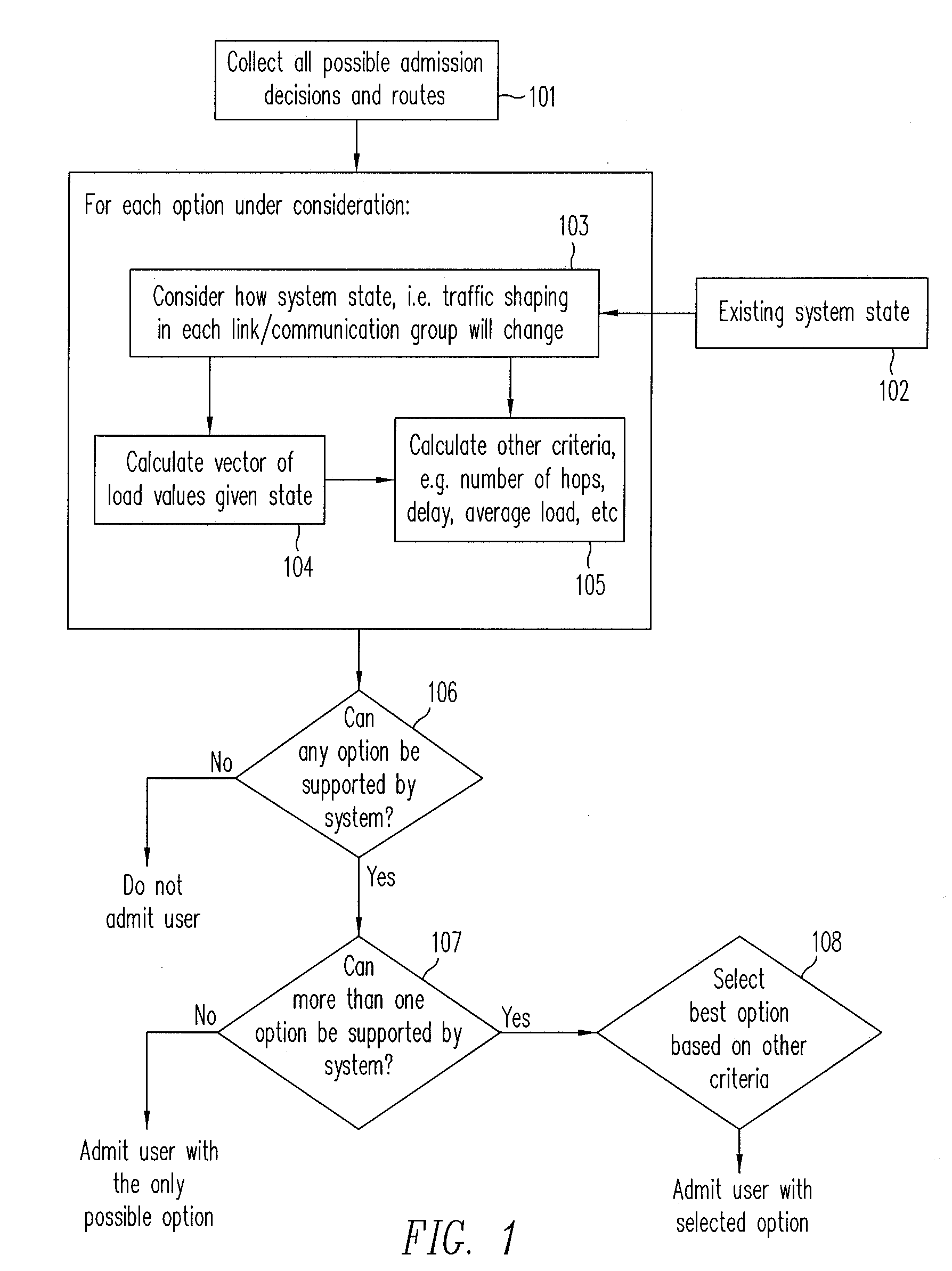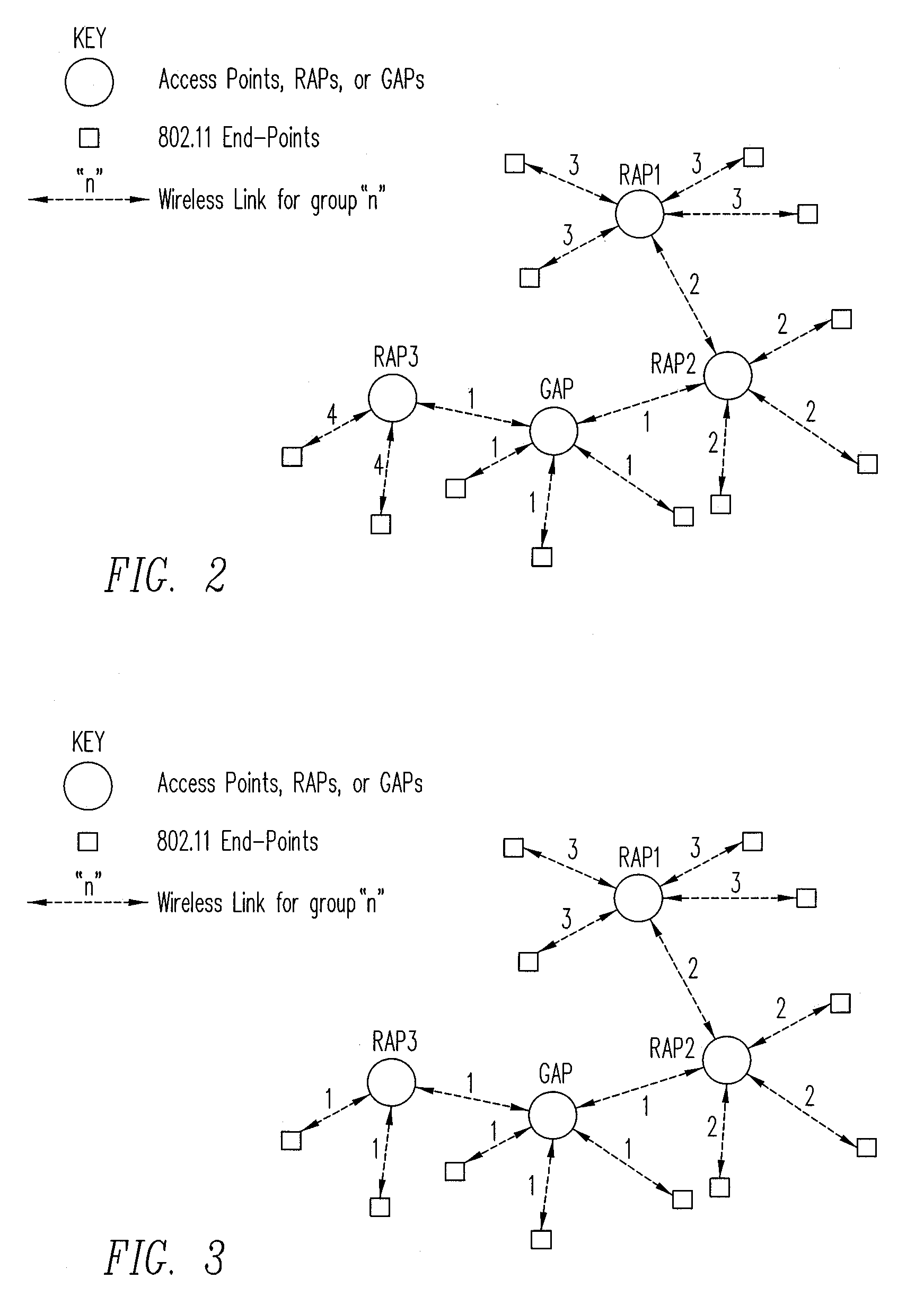Method and apparatus for managing admission and routing in multi-hop 802.11 networks taking into consideration traffic shaping at intermediate hops
a multi-hop 802.11 network and traffic shaping technology, applied in data switching networks, frequency-division multiplexes, instruments, etc., can solve problems such as poor system performance, ineffective approaches, and ineffective prior art approaches, and achieve stable systems and stable and efficient effects
- Summary
- Abstract
- Description
- Claims
- Application Information
AI Technical Summary
Benefits of technology
Problems solved by technology
Method used
Image
Examples
Embodiment Construction
[0029]The present invention provides, in an 802.11-based or similar network, a method to admit and route users. The method routes the user's traffic through multiple-hop wireless links, determines and provides (implicitly or explicitly) traffic-shaping options at one or more of the hops. In certain situations, the admissibility condition is also a stability condition that each communication group has to satisfy for a given set of parameters or options (e.g., aggregation level, bursting level, and connection rates). The solution determines an acceptable set of parameters (more than one solution may exist) and the route and traffic profile across the network, for each user and communication group, without overloading or violating Quality of Service (QoS) constraints imposed for existing and new users.
[0030]According to one embodiment of the present invention, a central or “control” entity collects data regarding the state of the network and computes the loads for each communication gr...
PUM
 Login to View More
Login to View More Abstract
Description
Claims
Application Information
 Login to View More
Login to View More - R&D
- Intellectual Property
- Life Sciences
- Materials
- Tech Scout
- Unparalleled Data Quality
- Higher Quality Content
- 60% Fewer Hallucinations
Browse by: Latest US Patents, China's latest patents, Technical Efficacy Thesaurus, Application Domain, Technology Topic, Popular Technical Reports.
© 2025 PatSnap. All rights reserved.Legal|Privacy policy|Modern Slavery Act Transparency Statement|Sitemap|About US| Contact US: help@patsnap.com



